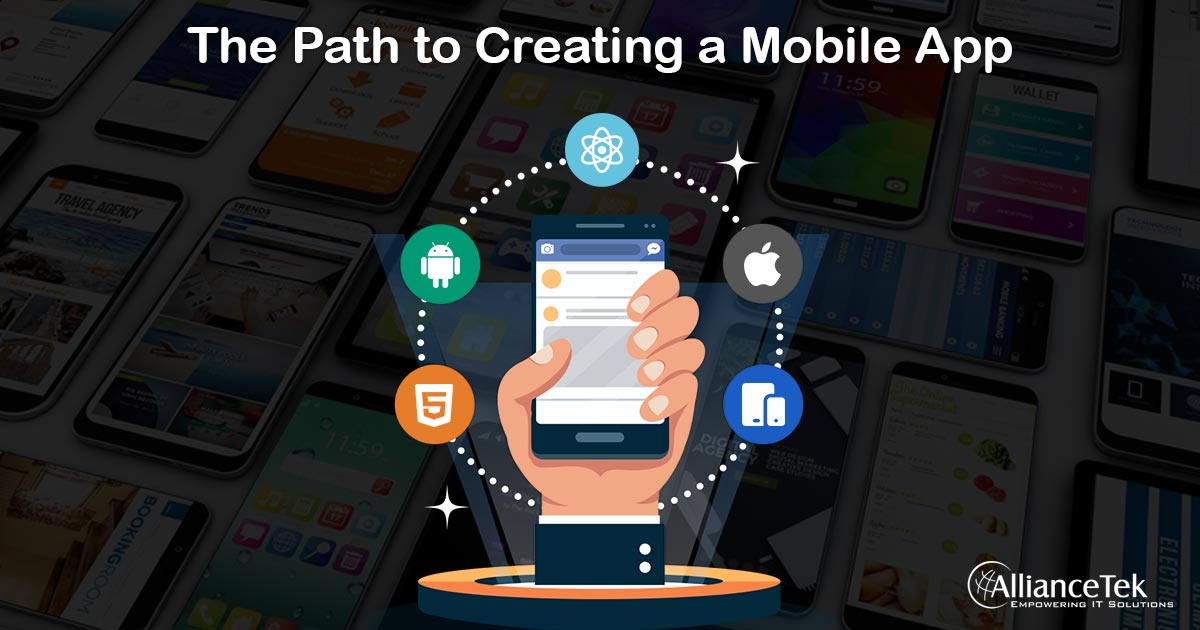By now, the word “app” has become common parlance in our everyday vernacular. Even Dictionary.com has a definition of the word to mean a “small, specialized program downloaded onto mobile devices.” Everyone knows what an app is and almost everyone even has an idea for one.
Often, I’m approached by people with great ideas for apps, but little understanding of the different mobile devices and platforms for apps and the different development tools for making an app. Should you make an app just for or should it be compatible? Which development kit should I use to make the app?
Selecting the appropriate development tool will depend on several factors, including the project's requirements, available resources, and the developer's expertise. Therefore, it's essential to conduct thorough research and make informed decisions when it comes to choosing the development tools and deciding on the app's compatibility with different platforms.
To find these answers, developers must first understand the nature of their app and then follow a sort of decision tree to determine the devices, platforms, and development process. I’ll show you how we do it here.

Types of Mobile Application Development Platforms
First, you must decide whether you feel your idea for an app is best served on a native device (built only for, BlackBerry, iPhone, etc ), cross-browser compatible (designed to work for more than one of these devices), or web-based in HTML5. Each has its own strengths and weaknesses that we can look at.
1. iOS Cross-platform
Cross Platform Mobile Application development for iOS can significantly impact mobile app development. This development approach allows developers to write one codebase that can be used across multiple platforms, including iOS, Android, and even web apps, saving time, effort, and resources. With pre-built UI components and libraries, cross-platform development frameworks such as React Native, Xamarin, and Flutter can significantly speed up the development process, resulting in faster time-to-market for mobile apps.
Moreover, cross-platform mobile development can help reduce development costs, as developers can reuse code across multiple platforms and work with a single development team, rather than requiring separate teams for each platform. With consistent UI components and design patterns across all platforms, cross-platform development can also provide a consistent user experience, making it easier to maintain, fix bugs, add new features, and update the app with only one codebase to maintain.
2. Android
Android is a popular mobile operating system that offers a wide range of benefits for mobile app development. One of the biggest advantages of Android is its large user base, which creates a significant demand for Android apps. This means that developers who choose to create apps for the Android platform have the potential to reach a wider audience and tap into a lucrative market.
In addition to its large user base, Android is an open-source platform, which means that developers have access to the source code and can modify it to suit their needs. This makes it easier for developers to create custom solutions and make changes to the platform, providing them with more control over the development process.
Android app development services also provide a comprehensive software development kit (SDK) that makes it easier for developers to create mobile apps. The SDK includes tools for creating user interfaces, debugging, and testing apps, simplifying the development process and making it more efficient.
Another key advantage of Android is its ability to distribute apps through multiple channels, such as the Google Play Store, Amazon App Store, and third-party app stores. This makes it easier for developers to reach a wider audience and increases the potential for app downloads.
Furthermore, the integration of Android with other Google services, such as Google Maps, Google Drive, and Google Analytics. This makes it easier for developers to integrate these services into their apps, providing additional functionality and enhancing the user experience.
3. Native
Designing an app for a native platform means developing it specifically for the operating system and hardware of each device it will run on. By doing this, you can take full advantage of the unique features and capabilities of each device, allowing for an optimal user experience. This level of customization enables you to create a seamless, intuitive, and consistent experience across all devices, which is crucial for building user trust and loyalty.
However, the downside to designing an app for a native platform is that it requires separate development for each operating system, such as Android or iOS, and often in different programming languages. This can be time-consuming and costly, as you need to create, test, and maintain separate codebases for each platform. Additionally, the process of submitting and updating apps on different app stores can also be more complicated and time-consuming.
Despite these challenges, many developers still prefer to design native apps due to their ability to offer superior performance and functionality. Native apps have full access to the device’s hardware, such as the camera or GPS, and can take advantage of platform-specific features, such as push notifications or in-app purchases. This results in faster load times, smoother animations, and more responsive user interfaces, ultimately leading to a better user experience.
4. Cross Platform Development
Developing a mobile application that works across multiple devices can be a great advantage for developers. It allows them to create one app that can run on a range of devices with different operating systems, screen sizes, and hardware. This saves developers the trouble of having to write separate code for each device, which can be a time-consuming and challenging task.
By using a cross-platform development environment, developers can write code once and deploy it on multiple platforms. These environments typically provide a set of libraries and frameworks that allow developers to build mobile apps using a single programming language. This can significantly reduce the time and effort required to create an app, as well as the cost of development.
However, cross-platform development is not without its drawbacks. One of the main issues is that it may not be optimized for each platform, and this could lead to performance issues or an inconsistent user experience. This is because each device has its own set of hardware and software specifications, and these can impact how the app behaves.
To address this, the Cross Platform App Development Team can use custom plugins to add specific functionality to their app for each device. These plugins allow developers to write device-specific code and integrate it into the app. However, this can add complexity to the development process, as developers need to create and maintain different plugins for each device.
When choosing a cross-platform development platform, developers have several options, including PhoneGap, Titanium, and Rhomobile. Each platform has its own set of features and advantages, and developers must carefully evaluate each one to determine which one best suits their needs.
5. HTML5
The advent of mobile technology has transformed the way we interact with the internet and has opened up new possibilities for developers to create mobile-friendly web-based applications. One of the key technologies that have emerged to meet this need is HTML5 web development.
With HTML5, designing web-based apps that will work on mobile devices is now an option. This technology provides developers with a simple and fast way to create mobile-friendly apps that require less code and maintenance than the other options. Only knowledge of HTML and Javascript is needed to create an app that has the feel of a web app but is optimized for mobile devices.
However, despite its benefits, there are some limitations to using HTML5 for mobile development. Since Hybrid Mobile App Development is still a relatively new technology, there might be some limitations in using features that are very specific to a mobile device. Moreover, HTML5 is not as robust for application development as some other options, and low-level user interface rendering is less flexible for high-processing development, such as games.
Despite these limitations, HTML5 has become a popular option for mobile app development because of its simplicity, flexibility, and cross-platform compatibility. As technology continues to evolve, it is likely that HTML5 will become even more versatile and powerful, making it an even more attractive option for mobile app developers in the future.
Which One’s the Best?
So how do you decide which of these three methods to use? As a general rule of thumb, it depends on how complex the app will be. Use HTML5 if the app is simple and does not require interaction with mobile SDK-specific features. Apps developed in HTML5 should just be browser apps that are mobile-friendly. But use a cross-platform development environment when you have more complex programs that need a faster development time. For even more complex apps that make use of the very specific features of mobile devices, you should develop natively for each device.
I hope this information will allow developers to make better decisions when planning. There will likely be an ongoing debate over which is best as these development environments change and even new ones emerge. But which platform where do you prefer to develop for and why? I’d love to hear my readers’ input on this topic.


